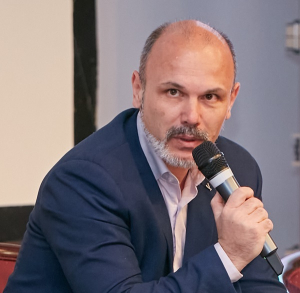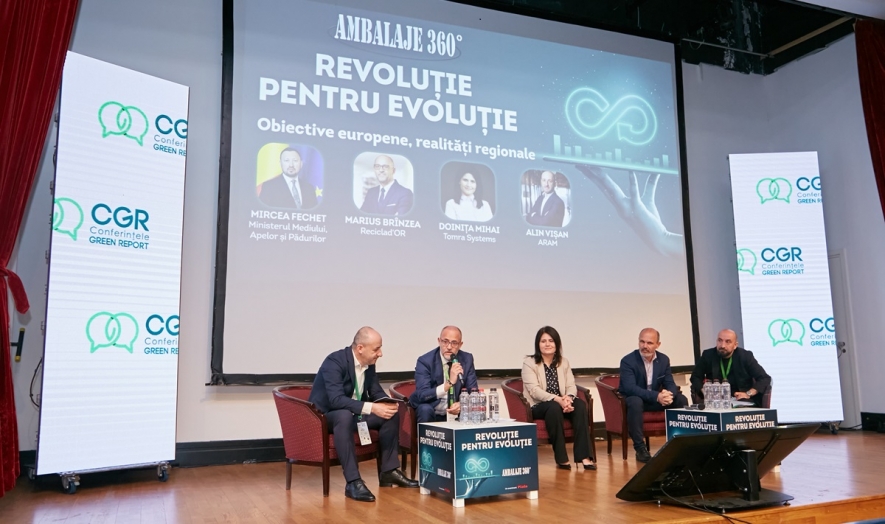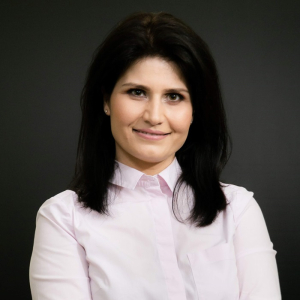Packaging 360 > European Objectives, Regional Realities
Although we collect and recycle more materials each year, the proportion of recycled materials does not keep up with the increase in goods sold, and the collection rates are much below 50% for most recyclable materials.
We tried to find out whether the recycling targets set by the European Commission in the PPWR regulation draft are too ambitious from Marius Brînzea, Strategy Director at Reciclad’OR: “The PPWR regulation will initially impact existing packaging solutions, and later on, it will affect business models. The collection rates set at the European Union level are not high for Eastern Europe. The way we reach them is indeed a challenge. Through this PPWR regulation, there is actually a transition from quantitative concern to qualitative concern. To transition to a circular economy, we need a certain quality of packaging on the market and high-quality recycling collection.
What PPWR brings new is that it aligns with the architecture of the European Green Deal and the new Action Plan for a Circular Economy. Firstly, it addresses the essential requirements for all types of packaging, not just plastic. Secondly, it avoids creating barriers in the functioning of the internal market of the European Union by establishing a uniform rule. Experts estimate that with the adoption of the PPWR Regulation, we will also see amendments to the Single Use Plastic Directive because the Regulation impacts the entire life cycle of packaging,” says Marius Brînzea.
The challenges of the Regulation are grouped into three pillars. One refers to the prevention of waste generation and the reuse of packaging. The second set of measures refers to the circularity of the packaging and the adoption of measures to improve packaging management. The third pillar of the regulation refers to the recycled content percentage in new packaging. One measure states that each member state has the obligation to reduce packaging per capita by 5% by 2030 compared to 2018, by 10% by 2035, and by 15% by 2040. The macroeconomic impact of this measure is significant. If the reference year remains 2018, Romania saw a 44% increase in packaging in 2020. Another measure is even more challenging: achieving reuse objectives! By 2040, economic agents who market alcoholic and non-alcoholic beverages must reach a threshold of 40% reusable packaging in a system that ensures their reuse,” noted Marius Brînzea.
To find out what the role of automated packaging collection systems will be in the new European landscape painted by the 16 measures provided in PPWR, we invited Doinița Mihai, Vice President of Public Affairs Eastern Europe South at Tomra Systems, to talk about the impact of automated systems on collection targets in various European countries.
“Until PPWR is adopted and becomes operational, we already have a series of European Directives that set collection quotas and percentages of recycled material content starting January 1, 2025. Romania is now in the full process of implementing the Return Guarantee System, which will cover part of the needs generated by these objectives. Since we are talking about a revolution, at Tomra, we assume this mission to lead the resource revolution. With the Tomra solutions we provide in over 100 markets worldwide, we witness the birth of integrated resource management systems. These are also the solutions we previously had the opportunity to present as integrated collection systems with solutions for the separate collection of other types of fractions, whether other packaging or materials, and even with a solution for sorting municipal solid waste,” said Doinița Mihai.
Regarding reusable packaging, Doinița Mihai says that the technology used by Tomra allows intervention on the collection mechanisms and through the development of infrastructure will be able to take over a series of reusable packaging.

Alin Vișan, President of the Romanian Association for Packaging and Environment – ARAM, addressed the issue of non-SGR packaging during the conference Revolution for Evolution.
“In Romania, we are still in the stage of trying to collect current packaging. What do we do with non-SGR packaging, and how do we meet the collection and recycling targets for these packaging? It is indeed a challenge for us, those who put packaging on the market, to meet these higher targets year after year as a result of the revolution that has already taken place a few years ago when these targets were set. In Romania, we try to solve the delicate problem of collecting and recycling packaging with some primitive tools. Although tools that other states successfully use, such as separate collection or the ‘pay as you throw’ principle, work defectively or not at all under these conditions, we manufacturers manage to meet our collection targets,” said Alin Vișan.
“However, we will not stop saying that it is not normal how we operate, it is not normal not to have access to quantities from the municipal flow, quantities that could ensure the fulfillment of these obligations. We as manufacturers are required to bear the cost of collection and recycling. We do not go to collect and recycle. Those who must do this have performance objectives, and for this, they need to have access to those materials. What will we do with the new obligations from PPWR? As a responsible industry, we are already preparing to meet them. What tools do we especially need, the beverage industry, which is targeted by additional obligations? As long as the beverage industry is required to use this expensive SGR system for collection, as long as the beverage industry is required to use recycled material, how come no one asks what needs to be done for the beverage industry to have access to the recycled material? Because at this moment, there is no provision saying that the recycler is required to offer the recycled material to the one who collected it. The construction industry or the automotive industry could come and buy the entire production of recycled material. We managed to convince the legislators in Brussels that it is necessary to close this circularity chain, but for now, we are talking about declarations of intent,” highlighted Alin Vișan.
What is the perspective on taxing packaging that enters the recycling circuit in relation to packaging that does not enter this circuit, not being collected?
This question was answered by Laurențiu Tomescu, Director of the Fiscal Control Directorate, Administration of the Environmental Fund.

“The Administration of the Environmental Fund supports any new initiative that leads to an increase in the collection and recycling of packaging waste. A short time ago, the Ministry of the Environment announced funding of 221 million euros for projects to increase the recycling capacity of packaging waste. The AFM has an entire department dealing with the funding of environmental projects, so we do not just deal with taxation. But as you know, the Administration of the Environmental Fund is an institution under the direct coordination of the Ministry of the Environment, which means it puts into practice the political decisions adopted in environmental matters,” said Laurențiu Tomescu.
Source: Revisa Piața





